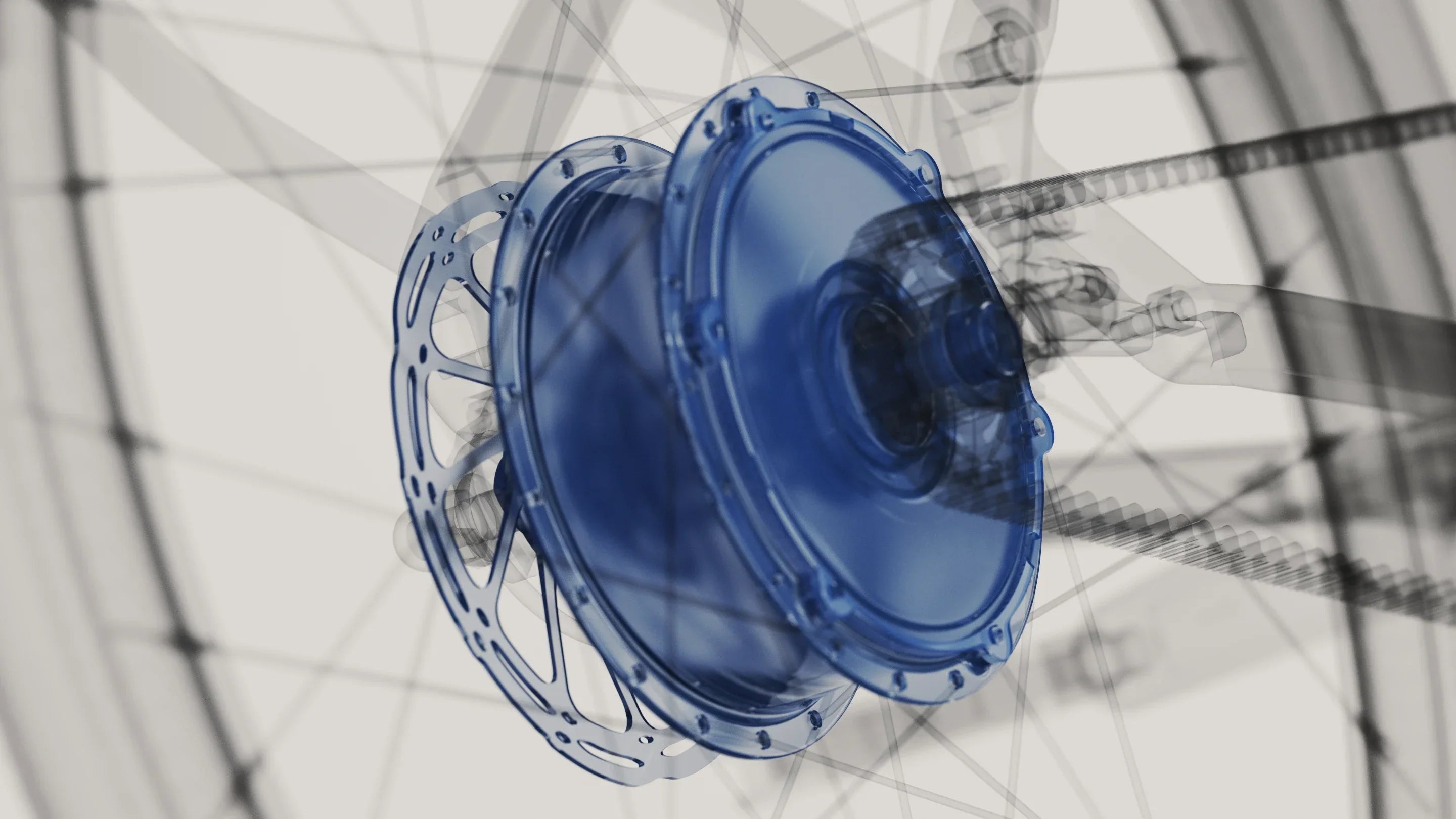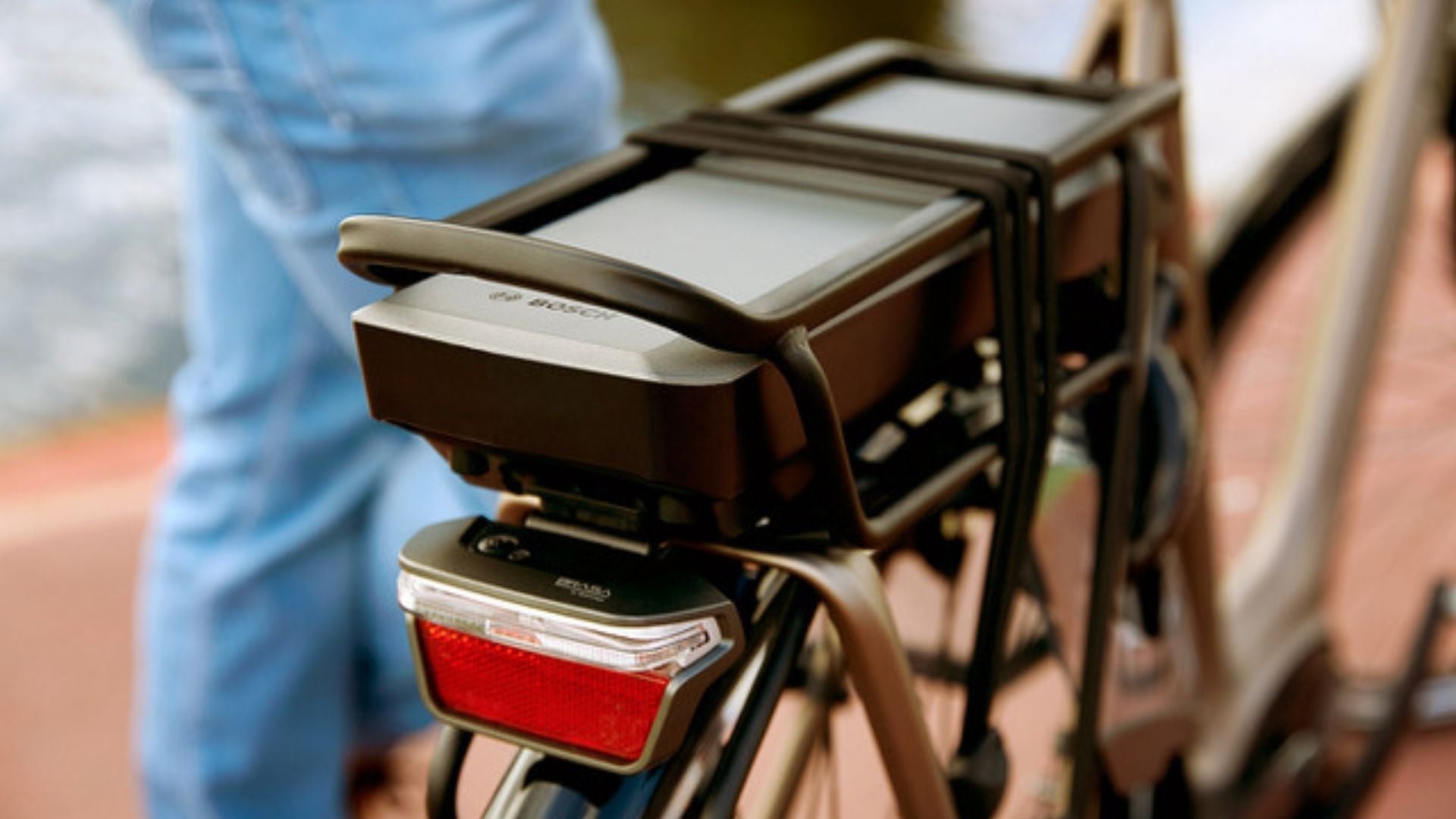Riding an electric bike: what are the environmental benefits?

As sustainable mobility becomes a modern priority, electric bikes have emerged as ideal solutions. Their growing popularity reflects a growing awareness of the importance of reducing our carbon footprint while maintaining excellent mobility in urban environments.
Why choose an electric bike?
Choosing an electric bike is beneficial both for the environment and for your daily comfort.
First of all, you should know that an electric bike can significantly reduce your CO2 emissions by replacing car or motorcycle travel. Fewer motorized vehicles on the roads means less air pollution, and therefore improved air quality.
The use of electric bicycles indirectly helps to relieve congestion on the roads , thus reducing traffic jams and noise pollution, while promoting an active and healthy lifestyle for users.
So, what's the point of owning an electric bike? Beyond its environmental benefits, it offers a practical and economical alternative for everyday urban travel!
Reducing carbon footprint
E -bikes play a key role in reducing the carbon footprint compared to cars and other motorized means of transport. Their impact on the environment is much lower, mainly due to their low energy consumption and the absence of direct CO2 emissions .
Electric bikes run on rechargeable batteries , requiring little energy to recharge, while cars necessarily need gasoline to run. Every kilometer traveled by electric bike therefore equates to a direct reduction in greenhouse gas emissions.
But did you know that producing an electric bike also generates significantly less CO2 than manufacturing a car? This is due to the small amount of materials required for its manufacture and the less energy-intensive manufacturing processes.
Environmental benefits of electric bikes
Contribution to the reduction of air pollution
Air pollution is a major problem in urban areas , where traffic density is high.
We don't always think about it, but electric bikes really do contribute to significantly reducing air pollution.
Typical cars, motorcycles, and scooters emit harmful exhaust gases such as carbon dioxide (CO2), nitrogen oxides (NOx), and particulate matter. In contrast, electric bikes produce absolutely no direct emissions during use.
Using electric bikes also reduces the need for fossil fuels , which in turn reduces emissions related to the extraction, refining and distribution of these fuels.
Thus, improving air quality through e-bikes has direct health benefits . A reduction in air pollution leads to a decrease in respiratory and cardiovascular diseases, which in turn improves the quality of life of city dwellers and contributes to a cleaner and healthier urban environment for all!
Less noise, more peace and quiet
Noise pollution is one of the biggest drawbacks of cars and motorized two-wheelers (combustion engines, exhaust systems, etc.). And this is where electric bikes once again prove to be very advantageous.
Their noise impact is much lower, with e-bikes operating almost silently . This noise reduction is particularly beneficial in residential areas and city centers, where noise pollution is a major source of stress and nuisance for residents.
Motor vehicle noise can also have negative health effects, such as sleep disturbances, concentration problems, and increased overall stress. Replacing car journeys with electric bike travel can further reduce these negative impacts and contribute to a better quality of life for all .
Physical and health benefits

Contrary to popular belief, using an electric bike does not mean a complete lack of physical effort. It does, however, constitute a regular physical activity that can contribute to weight loss and muscle building .
In other words, although the electric motor assists pedaling, the user still has to make a physical effort, which activates the cardiovascular system and burns calories.
Do you lose weight with an electric bike?
Yes , you can lose weight with an electric bike! Even with electric assistance, pedaling requires energy, which allows you to burn calories.
Weight loss then depends on the intensity of the effort and the duration of the journeys . However, e-bikes encourage users to make more journeys and cover longer distances than if they had to travel on foot or by traditional bicycle, which increases the overall calorie expenditure. Therefore, regularly incorporating e-bike travel into your daily routine can promote gradual weight loss.
Which muscle does the electric bike work?
The electric bike mainly works the leg muscles , particularly the quadriceps, hamstrings, calves and gluteal muscles.
When pedaling, these muscles are directly used to produce the movement, even if you are using electric assistance. The core muscles are also just as engaged (abdominals, lower back muscles, etc.) to maintain balance and posture on the bike.
Advantages and disadvantages of electric bikes
If you are still hesitant about getting an electric bike for your daily urban journeys, here are the main advantages of this mode of transport:-
Reduced CO2 emissions : Electric bikes emit significantly less CO2 than cars and motorcycles, helping to combat climate change. Every journey taken by electric bike reduces dependence on fossil fuels and lowers overall greenhouse gas emissions;
-
Reduced air pollution: Replacing motorized vehicles with electric bicycles also reduces the amount of air pollutants, such as nitrogen oxides and fine particles, improving air quality and public health;
-
Reduced noise pollution: E-bikes are much quieter than cars and motorcycles. Their use therefore contributes to a quieter urban environment, reducing noise-related stress and improving everyone's quality of life;
-
Health Benefits: Contrary to popular belief, regular use of an electric bike provides moderate physical activity that can contribute to weight loss and muscle building. This engages the muscles of the legs, core, and arms, helping you maintain good physical condition over the long term;
- Energy efficiency: Finally, recharging an e-bike battery is much more energy efficient than refueling a car, making it a more sustainable transportation option.
This time, regarding the disadvantages of electric bikes, we note in particular:
-
Battery production and recycling: Manufacturing e-bike batteries requires resources such as lithium, the extraction and processing of which can have negative environmental impacts. Additionally, battery recycling can pose challenges in terms of waste management;
-
Limited autonomy: Electric bikes have a limited autonomy compared to cars, which can be restrictive for long journeys;
-
High initial cost: Purchasing an electric bike still involves a significant initial investment;
- Weight and handling: It is important to know that electric bikes are generally heavier than traditional bikes (weight of the battery, motor, etc.). This can affect their handling, particularly during transport or storage.
Feel free to check out our FAQ to learn more about the Anod Hybrid!
Incentives and tax benefits for adopting electric bikes
Why ride an electric bike?
The government and local authorities are implementing financial incentives and tax benefits to encourage the adoption of electric bikes. Examples include:
-
Subsidies and purchase aid: This aid can take the form of purchase bonuses, covering part of the cost of the electric bike (up to several hundred euros), knowing that in France, national aid for purchasing a bike is extended until 2027, under certain conditions;
-
Tax benefits: In addition to direct subsidies, companies can benefit from tax deductions for the purchase of fleets of electric bicycles for their employees, up to a limit of 25% of the purchase or rental price of this fleet of bicycles, per financial year. Employers can also decide to reimburse their employees' bicycle expenses without these reimbursements being taxable;
- Non-financial benefits: This can include access to dedicated cycle lanes, reserved parking areas and charging facilities, all with the aim of encouraging people to adopt this environmentally friendly mode of transport.
To help you see things more clearly, here is an overview of the Bike Bonus that you can obtain depending on your situation, the latter being limited to 40% of the purchase cost within the following limits:
|
Reference tax income per share less than or equal to €7,100 |
Reference tax income per share less than or equal to €15,400 |
Legal entity |
|
|
Classic bike |
150 € maximum |
||
|
Electrically assisted bicycle |
400 € maximum |
300 € maximum |
|
|
Folding, cargo, recumbent electric bike, suitable for people with disabilities |
2,000 € maximum |
1,000 € maximum |
1,000 € maximum |
|
Traditional, folding, cargo, recumbent, handicapped-adapted bikes |
2,000 € maximum |
1,000 € maximum |
1,000 € maximum |
|
Electric trailer |
2,000 € maximum |
1,000 € maximum |
1,000 € maximum |
The Anod Hybrid: An ecological choice that goes even further
Innovative hybrid technology
The Anod Hybrid incorporates a unique hybrid technology combining an ultra-compact lithium battery and supercapacitors .
The supercapacitors, hidden in the frame, are much more environmentally friendly and durable than traditional lithium batteries. Their main advantage is that they allow optimal energy recovery during braking , thus extending the life of the system and reducing the overall ecological footprint of the bike.
Ultra-compact and lightweight battery
The Anod Hybrid's battery weighs only 650 grams , much less than conventional batteries which can weigh several kilograms.
It charges in less than an hour and a half via a USB-C charger, making the charging process simple and flexible.
The ultimate advantage? Its small size makes it easy to carry in a pocket or bag, and it even lets you recharge your smartphone in an emergency to avoid finding yourself without a means of communication.
Emission reduction and energy efficiency
Thanks to its high-efficiency MHR1 motor and energy recovery during braking , the Anod Hybrid consumes less energy while providing efficient electric assistance.
This not only reduces CO2 emissions, but also dependence on non-renewable energy resources.
The entire hybrid system is also designed to use much less lithium than conventional e-bikes, which is particularly beneficial for the environment.
Local manufacturing and ecological components
The Anod Hybrid is made in France , with production and assembly carried out in Vendée . This local approach is a choice made by the brand to minimize the carbon footprint linked to the transport of components, but above all to support the local economy.
It is also worth noting that the Anod Hybrid uses high-quality components, such as the Hermanns Nucore bio-sourced grips, which reduce the use of plastic and CO2 emissions, and its 6061 aluminum frame, which guarantees a long lifespan for the bike.






